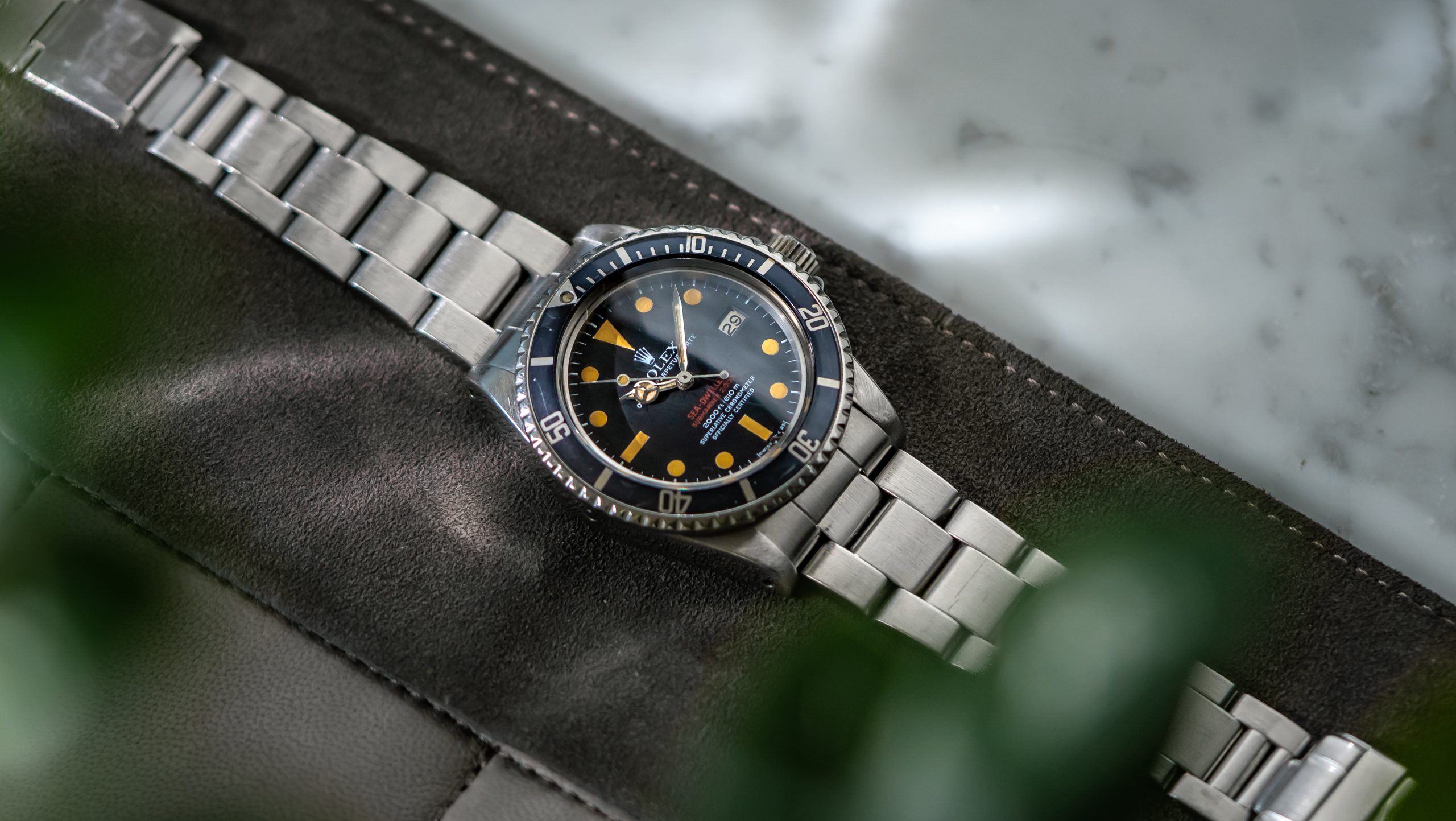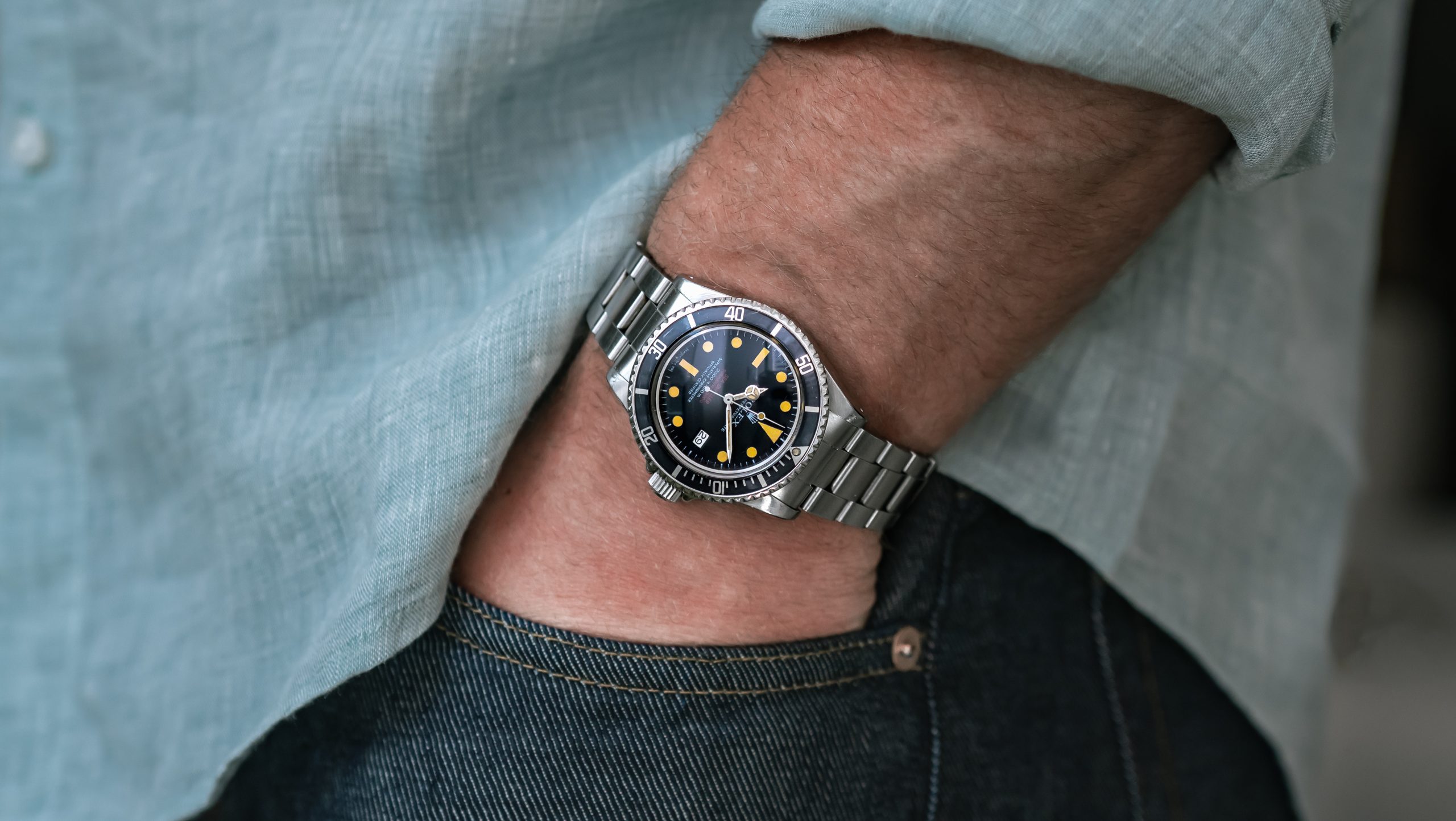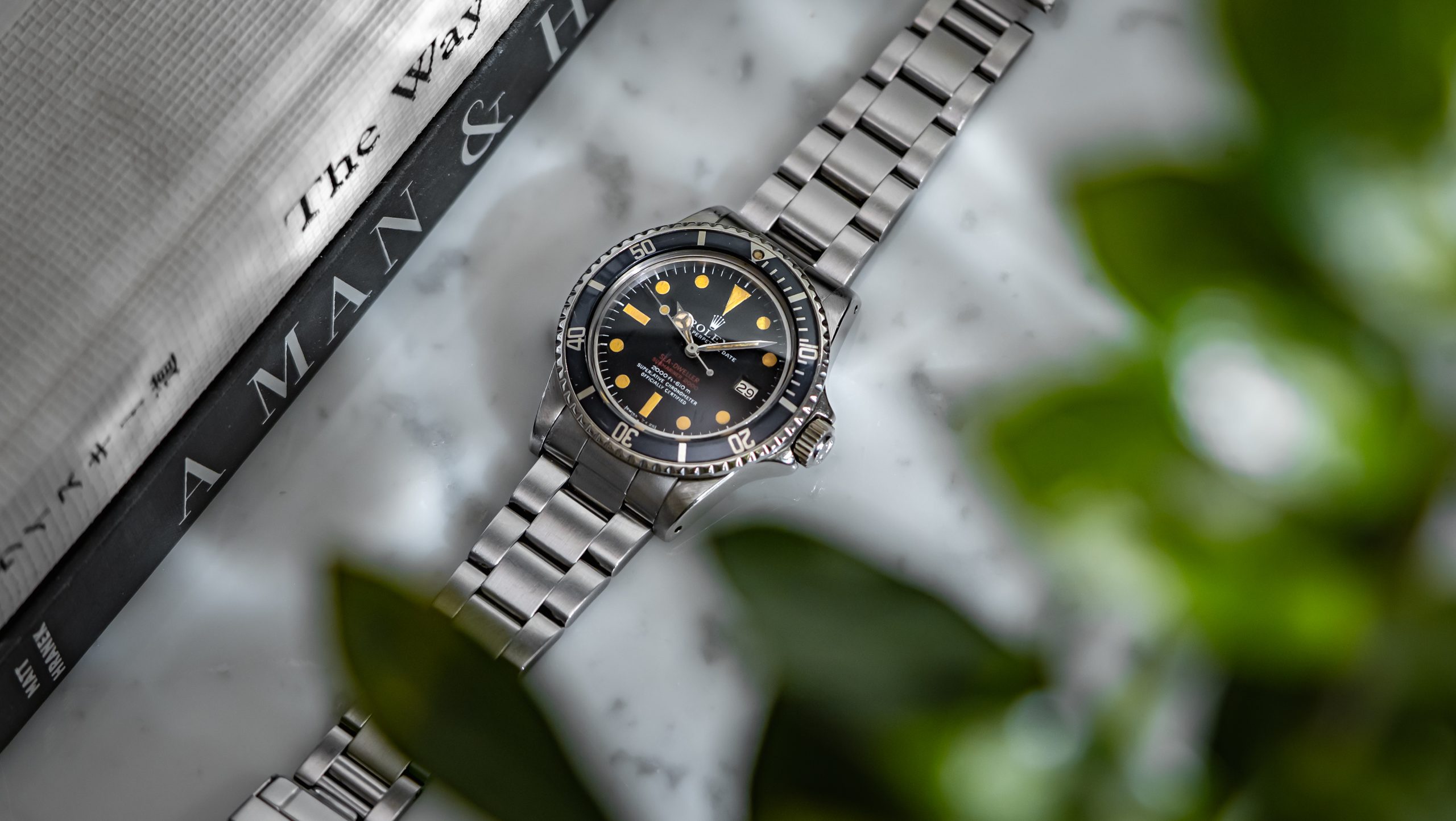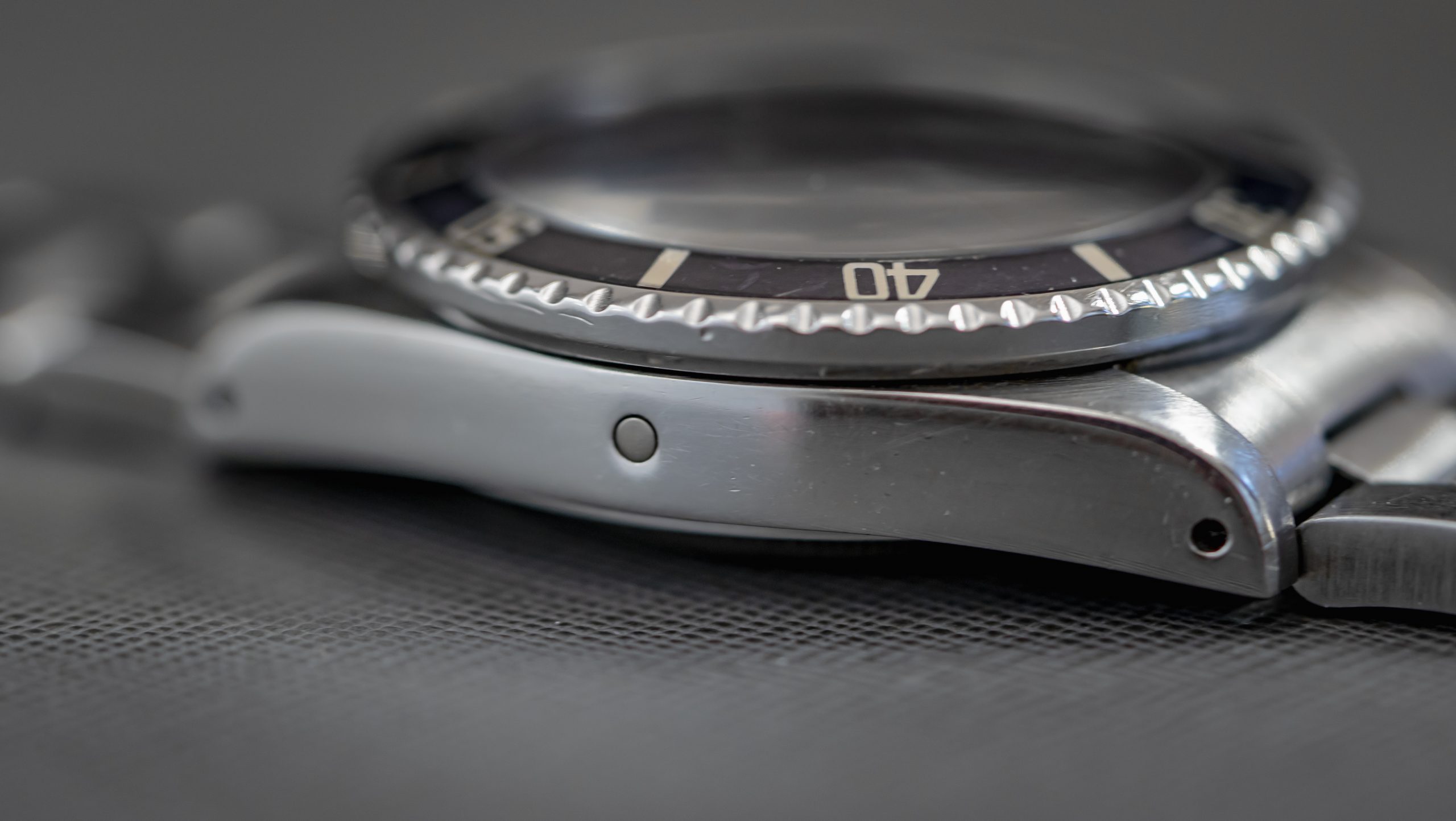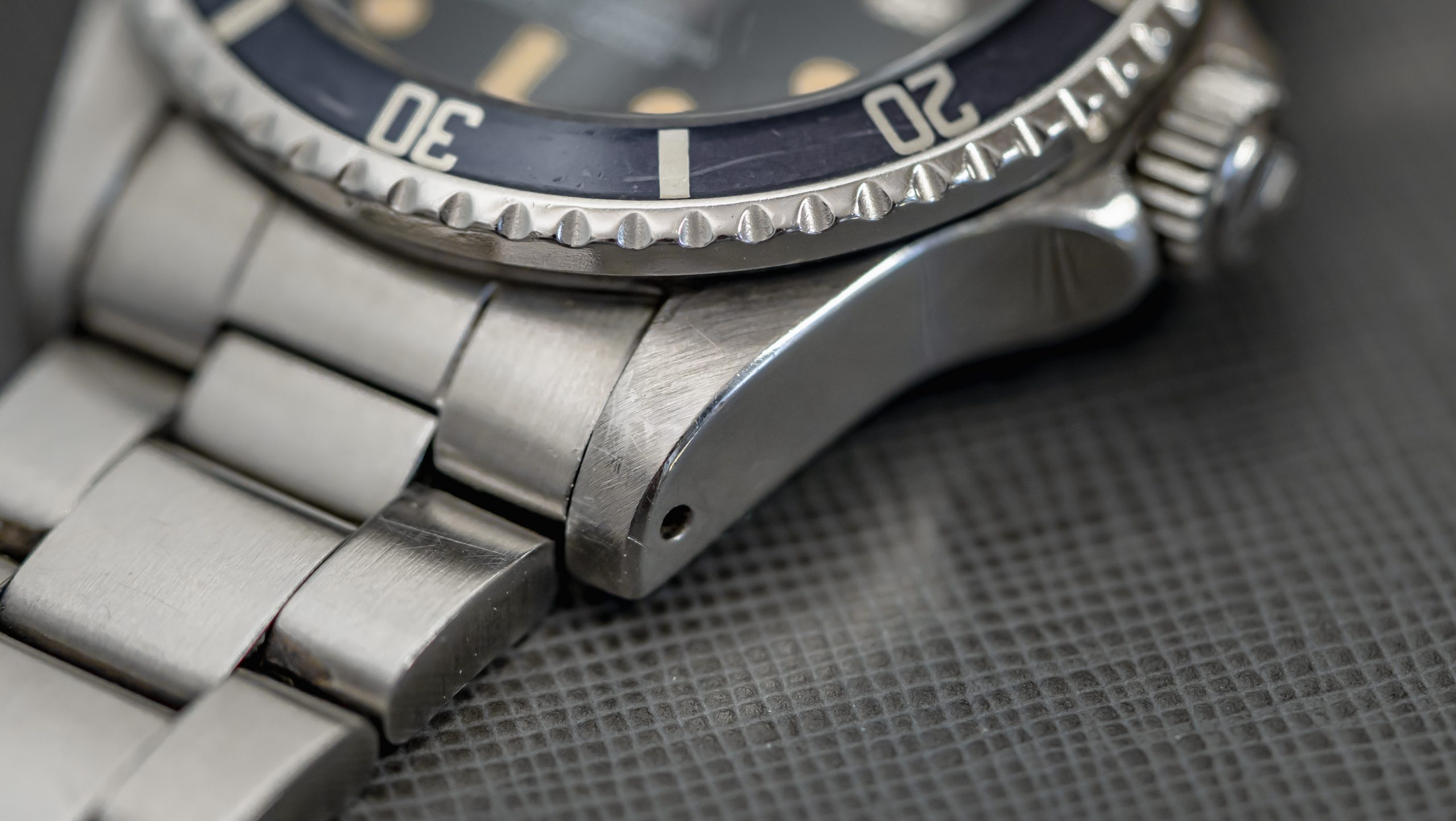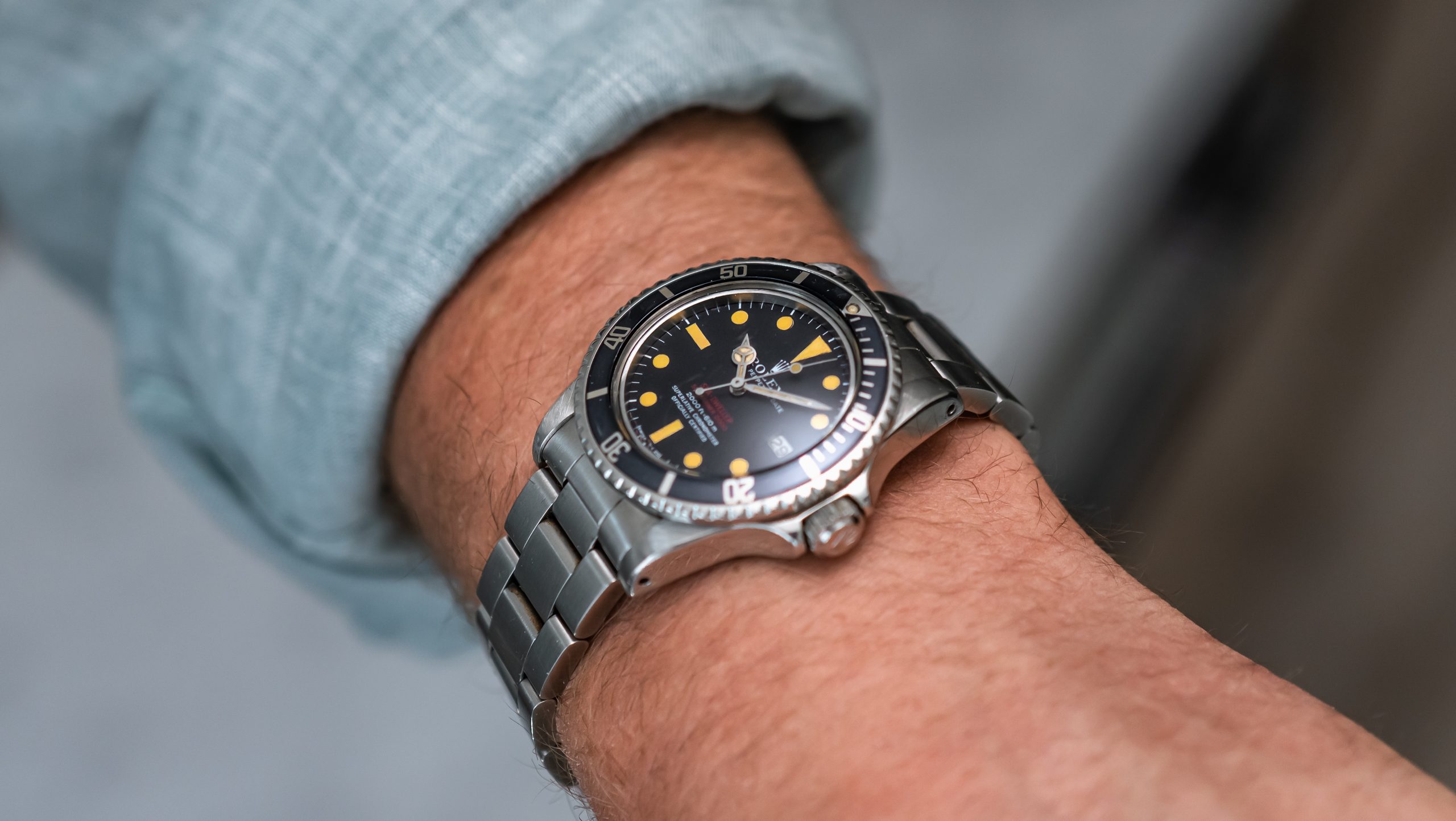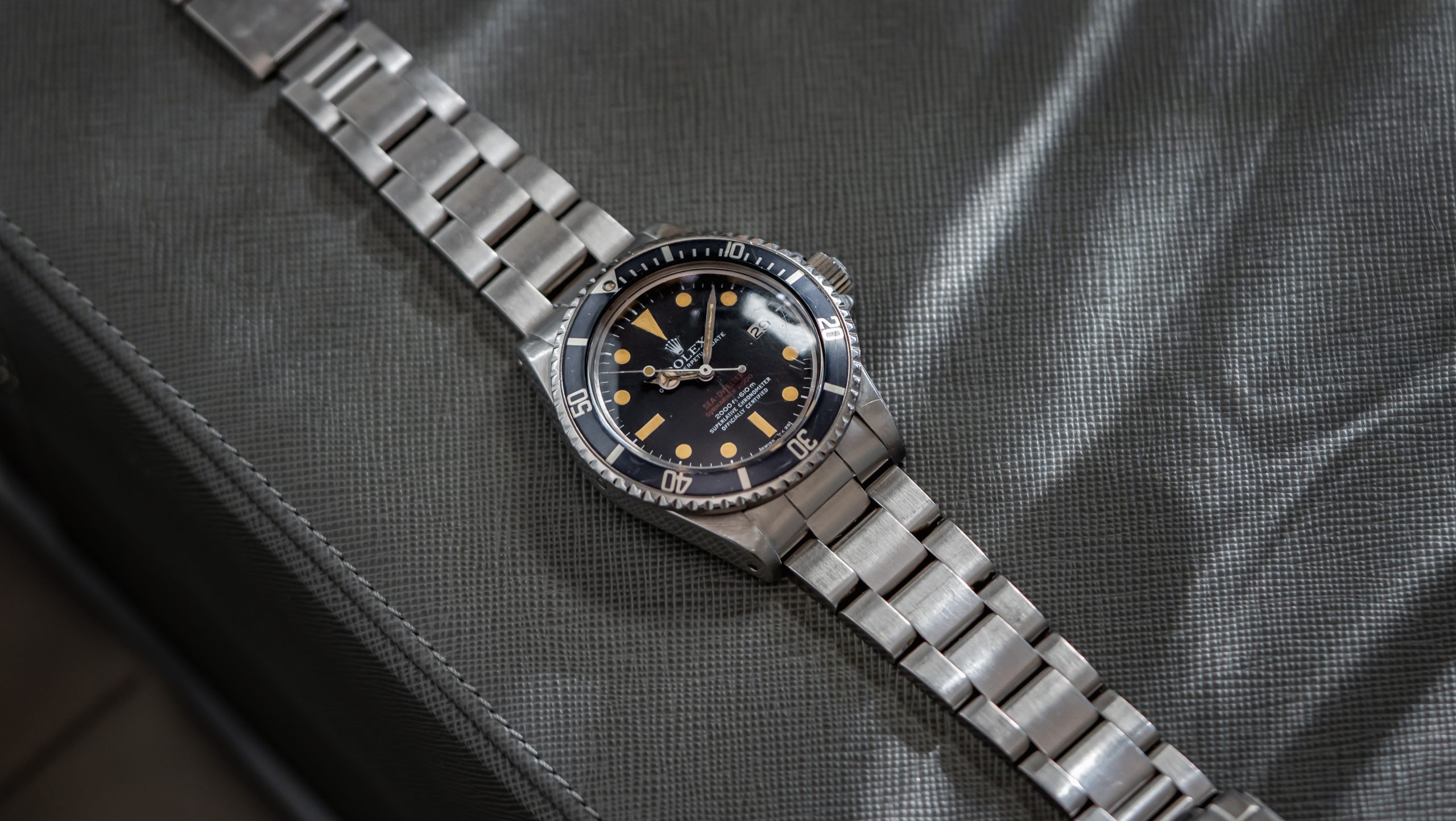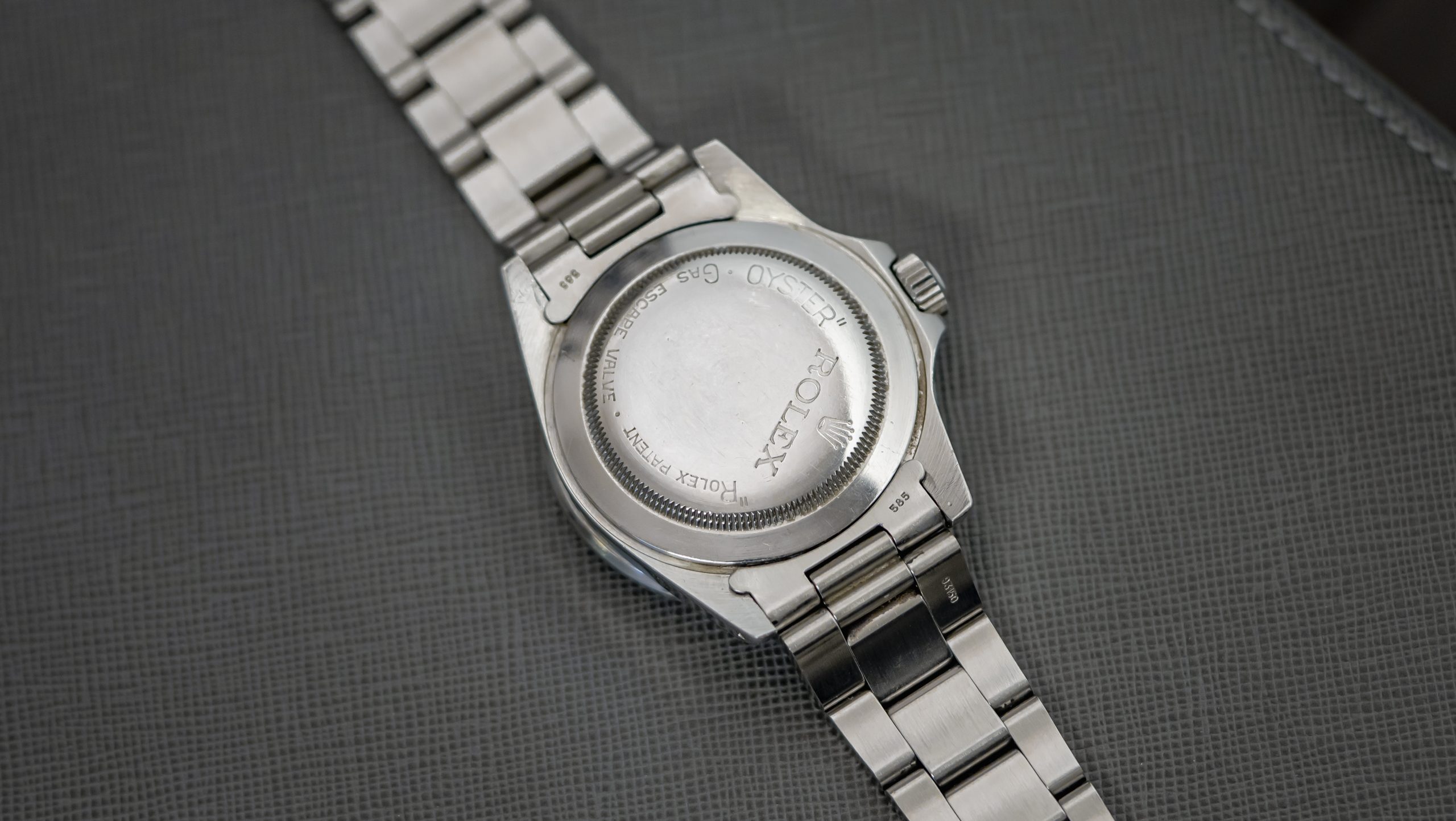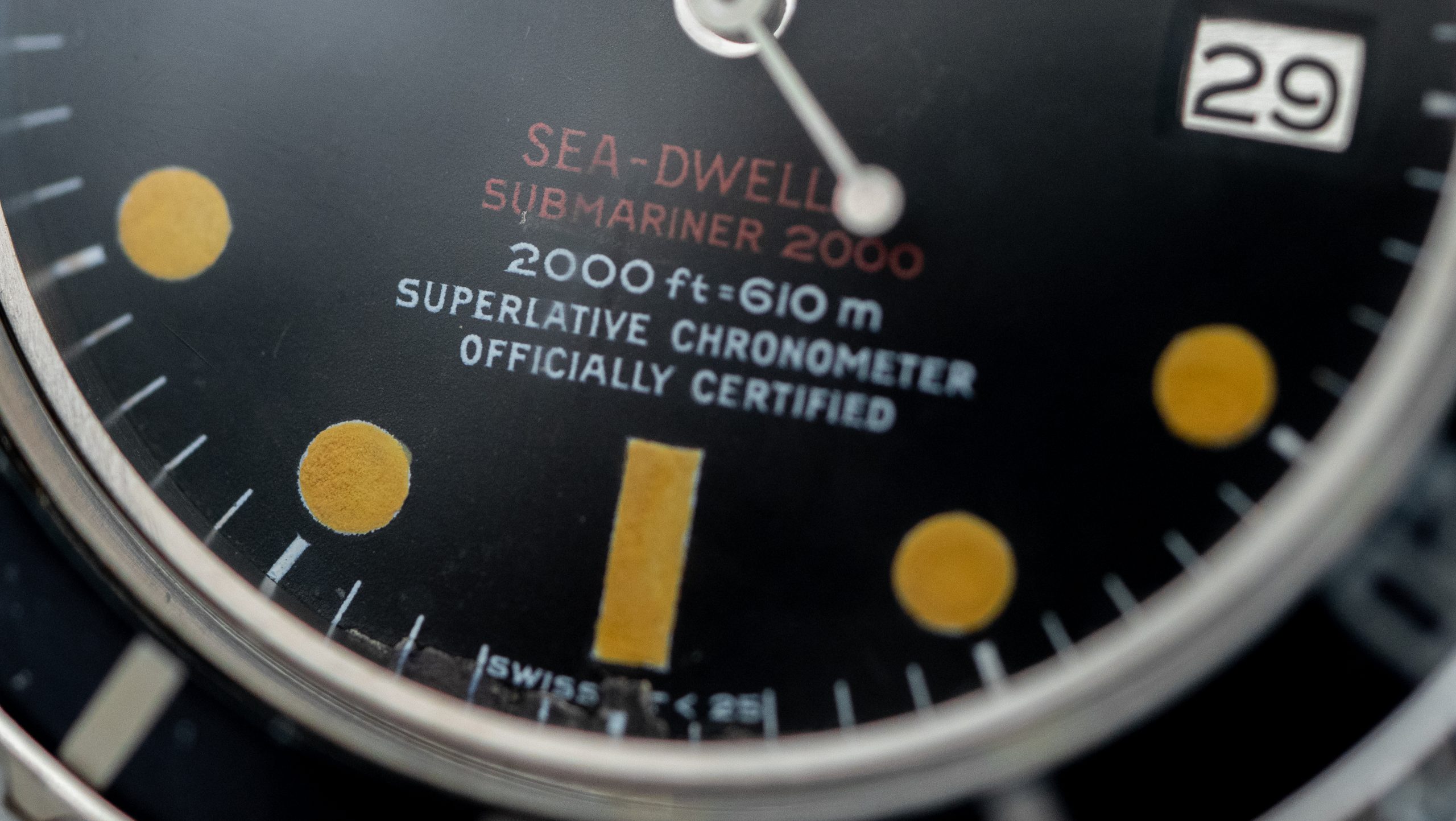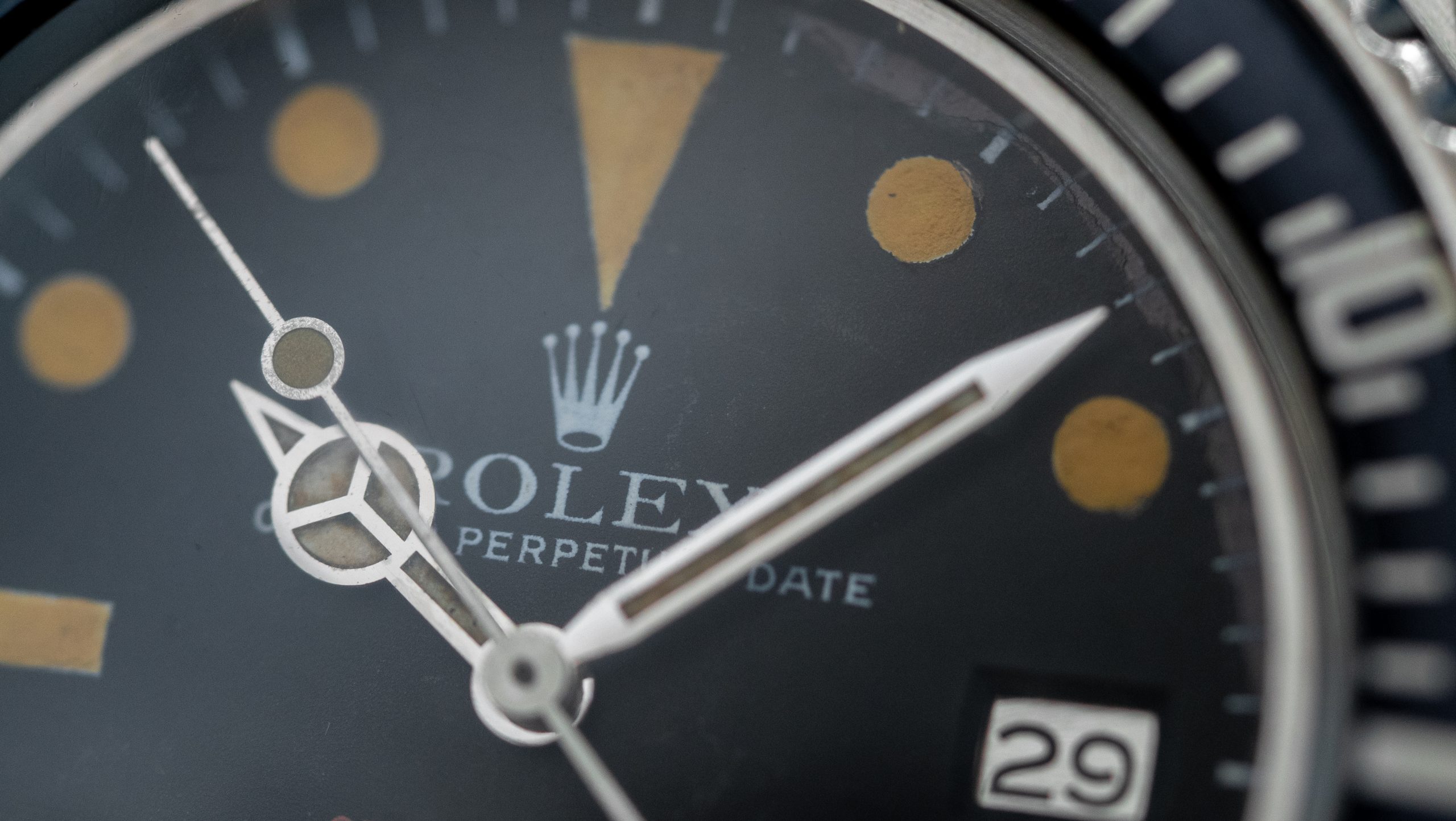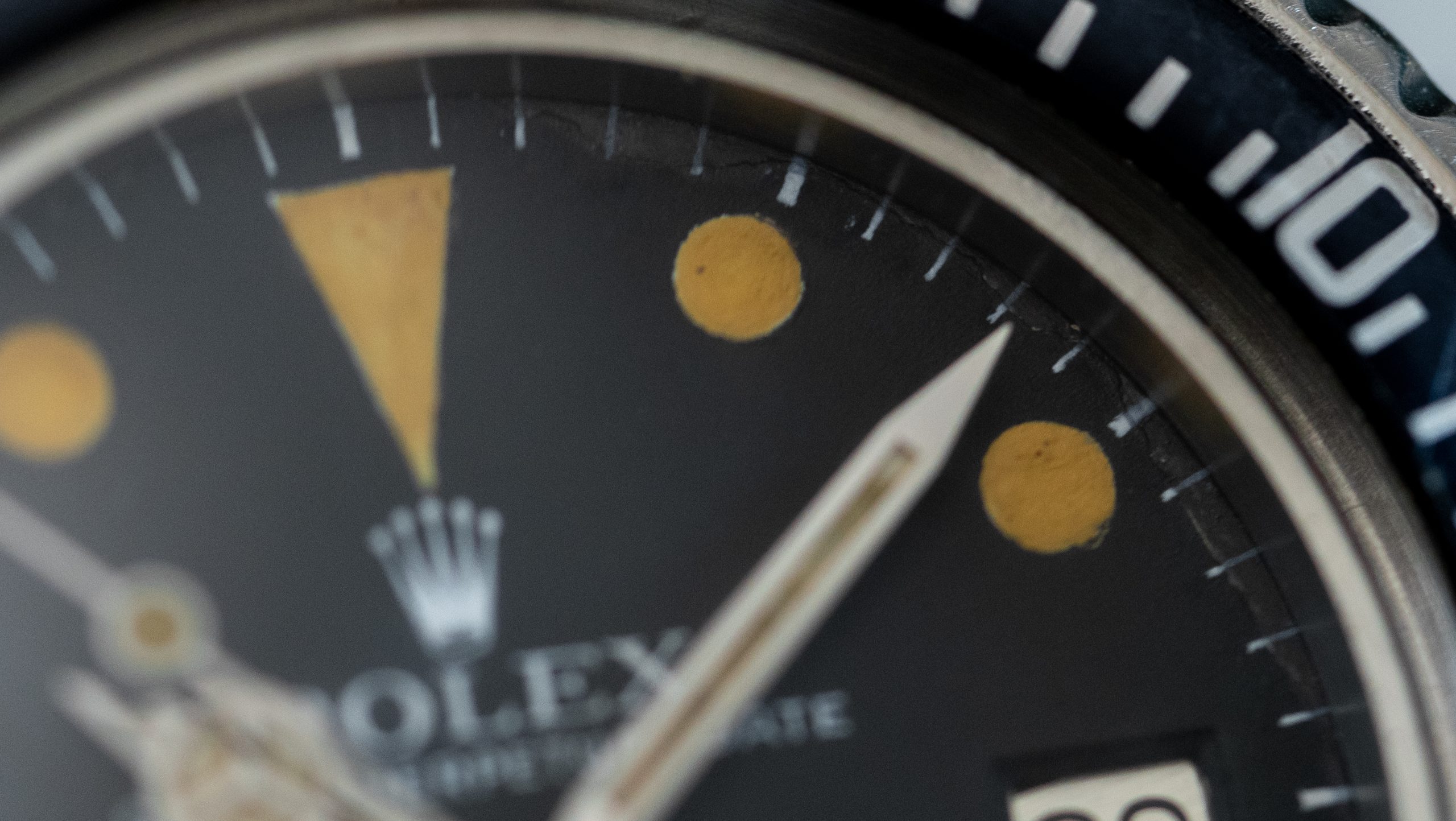The ref. 1665 was developed to push deeper than a Submariner, the first Rolex built to task to survive saturation diving. The 1960s saw energy move toward offshore oil rigs, which pushed the limits of dive watches available at the time. In addition, the world was installing underwater communication cables, pipelines, increasing military diving capabilities, and pushing the edges of human exploration with missions like the US Navy SEALAB experiments. Think of it as a ref. 5513 turned up to 11.
SEALAB aimed to test the health effects of underwater isolation to prove saturation diving viability long-term. SEALAB divers switched from Subs to Sea-Dwellers because the Sub’s crystals kept popping off on ascent. This was fixed through a very thick plexi crystal, thicker 39mm steel case, and helium escape valve which allowed helium to exit the case during decompression and prevents the plexi from popping. That HEV was pioneered in a series of Comex 5513/4 Subs and early Sea-Dwellers at about the same time, and these early efforts gave rise to the official relationship Rolex developed with Comex in ’71 as leaders in their respectable fields. It also spawned this, the ref. 1665, the first commercial Rolex Sea-Dweller.
The very first were single red dials, given to professional divers chosen by T. Walker Lloyd, an Oceanographic Consultant of Rolex, for testing or as awards. There are thought to be 11 or 12 of these. Following these were the Double Reds, an early dial with two coveted lines of red text in production from 1967-1978. These all preceded the ‘Great White’ 1665 with all white text. This Mk3 dial was the penultimate produced before the Great White took over.
It wears similar to a Sub if a bit more substantial, but compensates without a cyclops on its beat up original domed crystal. You’ll also spot near-pumpkin tritium and deep purple (not the band) ghosted bezel. There’s a lot to be said for a vintage watch showing it’s years on its metal. Patina is the whole point. This one shows its time on wrist, likely diving, everywhere, and that’s as it should be. If not a tool of purpose today, it is certainly still an object of desire.
